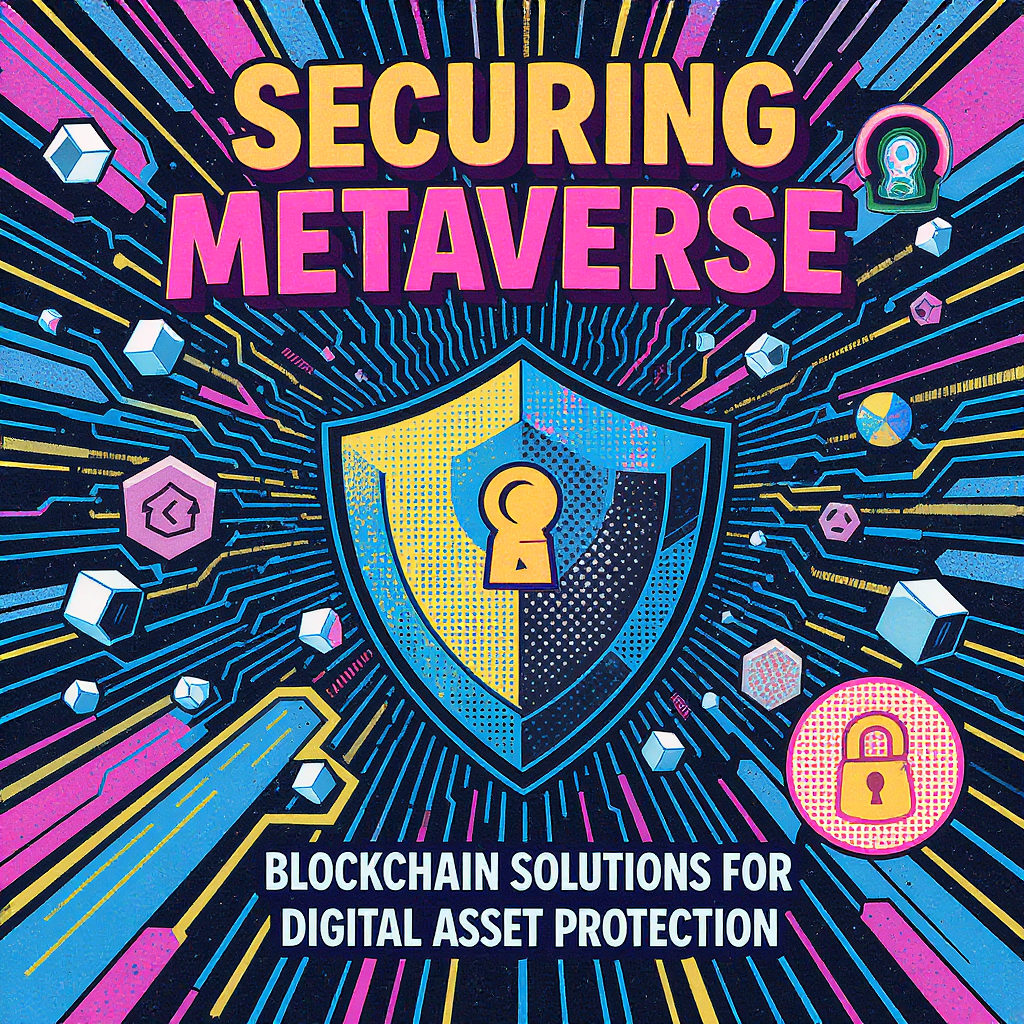The metaverse, a burgeoning digital realm promising immersive experiences and economic opportunities, faces significant challenges regarding the security of its digital assets. As users increasingly invest time, money, and personal data within virtual worlds, the need for robust security measures becomes paramount. This article explores how blockchain technology, with its inherent security features, can provide a crucial framework for protecting digital assets in the metaverse. We will delve into the specific ways blockchain can enhance security, addressing issues such as digital identity, ownership verification, and the prevention of fraud. By examining the practical applications and potential limitations, we aim to provide a comprehensive understanding of blockchain’s role in safeguarding the metaverse’s future.
Blockchain’s Role in Digital Identity Management
One of the primary challenges in the metaverse is establishing secure and verifiable digital identities. Traditional methods often rely on centralized systems vulnerable to hacking and data breaches. Blockchain offers a decentralized solution, enabling users to control and manage their digital identities without relying on a single entity. Self-sovereign identity (SSI) systems, built on blockchain, empower users to own and manage their data, selectively sharing only what is necessary. This eliminates the risks associated with centralized identity providers and strengthens user privacy. Furthermore, blockchain’s immutability ensures that identity records are tamper-proof, enhancing trust and security.
Secure Digital Asset Ownership and Transfer
The metaverse’s economy revolves around digital assets—virtual land, in-game items, and digital art. Blockchain’s transparent and immutable ledger provides an effective mechanism for tracking ownership and facilitating secure transfers. Non-fungible tokens (NFTs), built on blockchain, offer a unique identifier for each digital asset, proving its authenticity and ownership. This eliminates the possibility of duplication and fraud, providing a level of security that is currently lacking in many metaverse platforms. Smart contracts, self-executing contracts stored on the blockchain, can automate the transfer of ownership, making transactions efficient and secure.
Combating Fraud and Counterfeiting in Virtual Worlds
The potential for fraud and counterfeiting in the metaverse is substantial. The ease of duplicating digital assets presents a significant challenge to maintaining the integrity of the virtual economy. Blockchain technology offers a powerful defense against these threats. The unique identification provided by NFTs makes it significantly more difficult to create and circulate counterfeit goods. Furthermore, the transparent nature of blockchain transactions makes it easier to trace and identify fraudulent activities, potentially deterring would-be perpetrators. By leveraging blockchain’s auditability, metaverse platforms can better monitor transactions and take proactive steps to protect their users.
Decentralized Governance and Community Management
Many metaverse platforms face governance challenges, often relying on centralized decision-making processes. Blockchain can facilitate decentralized governance models, empowering community members to participate in decision-making. Decentralized autonomous organizations (DAOs), governed by smart contracts, can manage the allocation of resources, the development of new features, and the overall governance of the metaverse. This fosters a more transparent and democratic environment, enhancing user trust and fostering a sense of ownership among community members. This participatory approach enhances security by distributing control and reducing the risk of a single point of failure.
Conclusion
In conclusion, blockchain technology presents a powerful toolkit for securing the metaverse. Its features—decentralization, immutability, and transparency—directly address the key security challenges facing virtual worlds. From establishing secure digital identities and verifying asset ownership to combating fraud and implementing decentralized governance, blockchain offers solutions that are both innovative and practical. While challenges remain in terms of scalability and the complexity of implementation, the potential benefits of blockchain for securing the metaverse are undeniable. As the metaverse continues to evolve, the integration of blockchain will become increasingly crucial in ensuring the safety and prosperity of this burgeoning digital ecosystem. The robust security measures offered by blockchain will be essential in fostering trust and encouraging broader participation in the metaverse’s future.
References
Image By: Black Forest Labs






